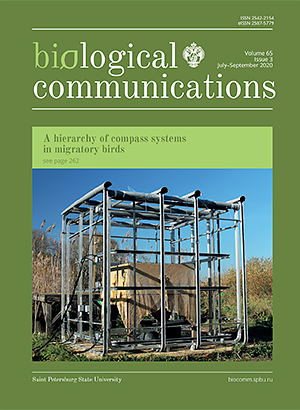Accumulation of milk increases the width of tight junctions in the epithelium of mouse mammary alveoli
DOI:
https://doi.org/10.21638/spbu03.2020.307Abstract
The study of the molecular mechanisms of maintaining the integrity of the epithelium during mechanical stress remains a relevant problem in the physiology of tissue barriers. A methodical approach has been applied which makes it possible to reproduce mechanical pressure on the apical region of cells in vivo and to study the participation and role of tight junctions in maintaining the integrity of the epithelial structure. Mammary gland tissue specimens from lactating control mice and animals after a 20-h interruption of suckling were prepared and the width of the tight junction of the secretory epithelium was analyzed. At the ultrastructural level, it was shown that accumulation of milk caused a significant increase in the width of the tight junction between epithelial cells. In the control group, the width of this structure was 2.1 ± 0.1 µm; in the experimental group — 4.2 ± 0.1 μm. The marked increase in the width of tight junctions between epithelial cells is in accordance with an observed increase in the level of claudin-1 and -3 in the secretory epithelium and can be interpreted as adaptive changes aimed at maintaining the structure of the alveoli.
Keywords:
mammary gland, alveolus, epithelium, tissue barrier, tight junction, claudins, electron microscopy
Downloads
References
Downloads
Published
How to Cite
License
Articles of Biological Communications are open access distributed under the terms of the License Agreement with Saint Petersburg State University, which permits to the authors unrestricted distribution and self-archiving free of charge.





